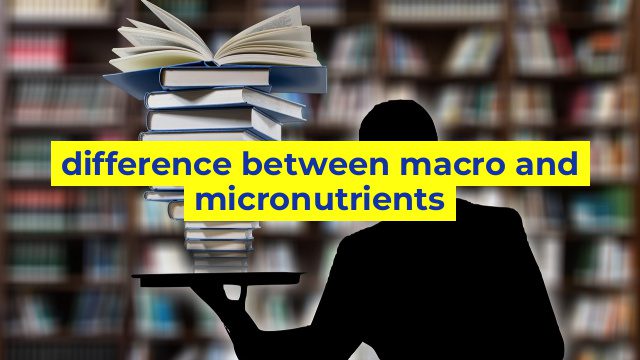Understanding the Difference Between Macro and Micronutrients
Nutrition plays a vital role in maintaining a healthy body. It ensures that we receive the necessary nutrients to keep ourselves fit and energetic. Nutrients can be classified into two categories- macro and micronutrients. In this article, we’ll delve into the difference between these two types of nutrients.
What are Macro Nutrients?
Macro-nutrients refer to the nutrients that our body requires in large amounts to carry out various bodily functions effectively. These are mainly composed of carbohydrates, proteins, and fats.
Carbohydrates are the primary source of energy for our body, and they provide fuel for the organs of the body, including the brain. They are found in various food sources like grains, fruits, vegetables, and dairy products.
Proteins are essential for the growth and repair of tissues and muscles. They are also a source of energy, and they help in the functioning of hormones and enzymes. Proteins can be found in both plant-based and animal-based food sources like meat, fish, eggs, legumes, and soy products.
Fat is an essential nutrient that provides energy, insulation, and cushions your organs. They also help in absorbing certain vitamins like A, D, E, and K. Fats are found in various sources like nuts, seeds, avocado, olive oil, fish, and meat.
What are Micronutrients?
Micronutrients refer to the nutrients that our body needs in small amounts but are extremely essential for the proper functioning of the body. These comprise vitamins and minerals.
Vitamins are organic compounds that act as coenzymes and help in carrying out various biochemical reactions in the body. They can be classified into fat-soluble vitamins and water-soluble vitamins. Fat-soluble vitamins include A, D, E, and K, while B-complex vitamins and Vitamin C are water-soluble vitamins.
Minerals are inorganic compounds that are essential for the proper functioning of the body. They help in building strong bones and teeth, and they also perform various other functions. Minerals can be classified into two categories: macrominerals and trace minerals. Macrominerals include calcium, phosphorus, sodium, and potassium, while trace minerals include iron, zinc, selenium, and copper.
Conclusion
In conclusion, both macro and micronutrients are essential for maintaining a healthy body. The primary difference is that macronutrients are needed in large quantities, while micronutrients are needed in smaller quantities. A well-balanced diet that comprises of both macro and micronutrients is vital for overall health and wellbeing.
Table difference between macro and micronutrients
| Macro Nutrients | Micro Nutrients |
|---|---|
| Needed in large quantities by the body | Needed in small quantities by the body |
| Include carbohydrates, proteins, and fats | Include vitamins and minerals |
| Supply energy to the body | Regulate and support bodily functions |
| Provide structural components to the body | Aid in the absorption and utilization of other nutrients |
| Examples include bread, pasta, meat, and oils | Examples include spinach, oranges, whole grains, and nuts |

